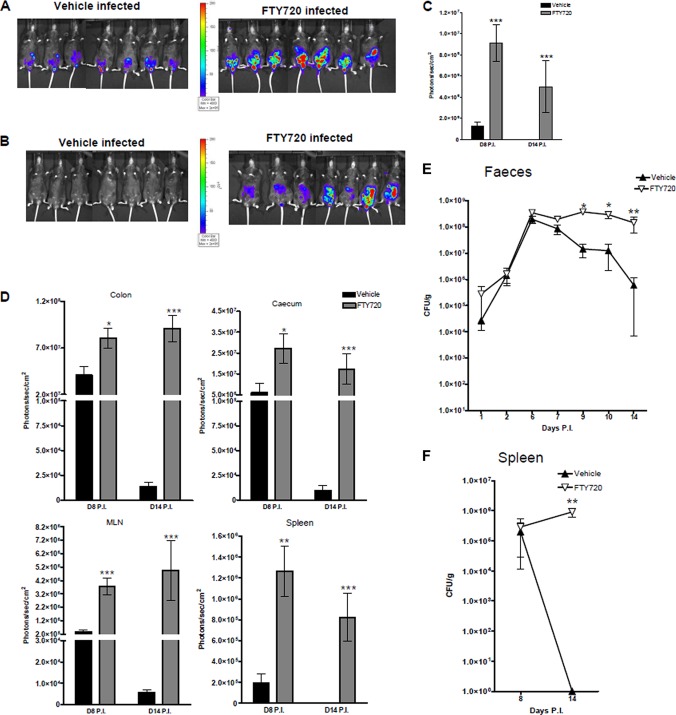Fig 2.
FTY720 treatment impairs clearance of C. rodentium infection. Shown is whole-body bioluminescence imaging of vehicle-treated and FTY720-treated mice on days 8 (A) and 14 (B) p.i. with C. rodentium. Also shown are bioluminescent signals from the gastrointestinal region (in vivo whole-body imaging) (C) and from ex vivo organs, i.e., the colon, cecum, MLNs, and spleen (D). Data are expressed as the mean ± the SEM for 7 individual animals per group. The significance of differences was determined by the Mann-Whitney U test (***, P < 0.001; **, P < 0.01; *, P < 0.05). Colonization and clearance of C. rodentium in vehicle-treated and FTY720-treated mice as indicated by counts of viable bacteria (CFU/g) in the stool (E) and spleen (F). Samples were taken at different time points for 14 days p.i. Data are expressed as the mean of 7 to 14 individual mice ± the SEM. The significance of differences was determined by the Kruskal-Wallis test followed by Dunn's multiple-comparison test (**, P < 0.01; *, P < 0.05).

